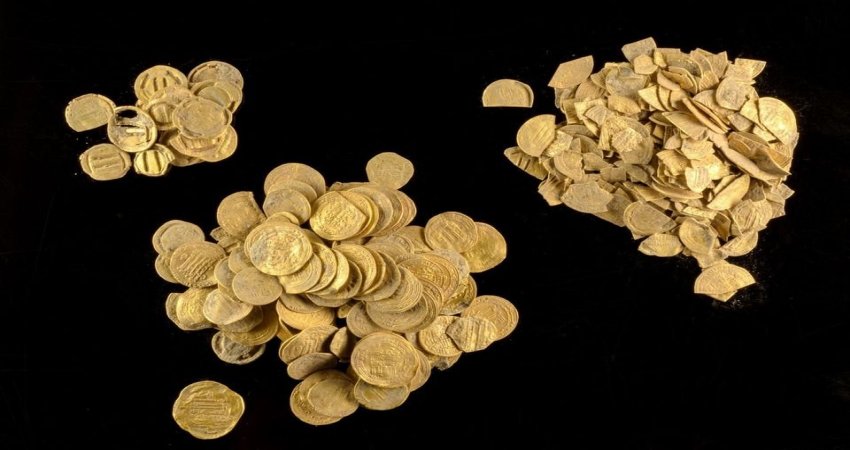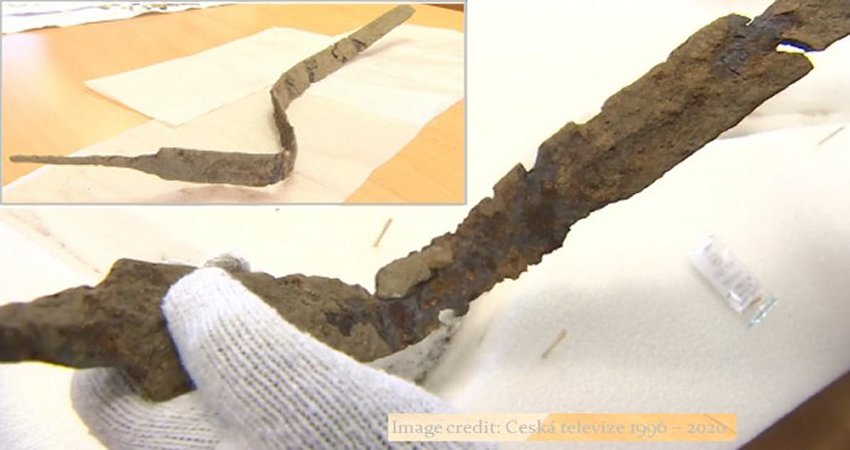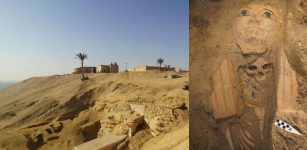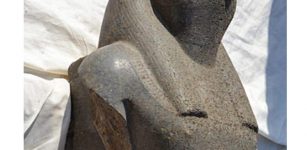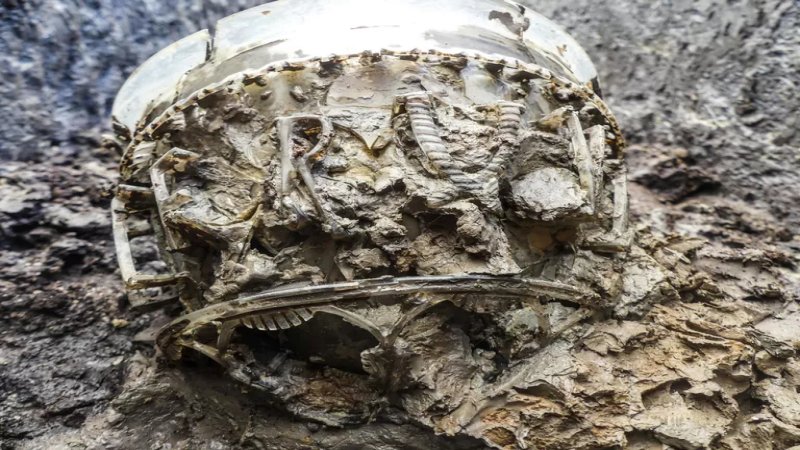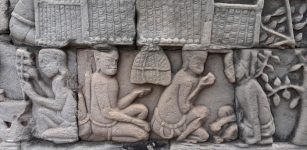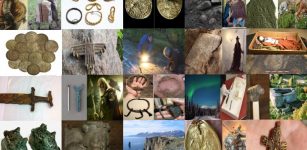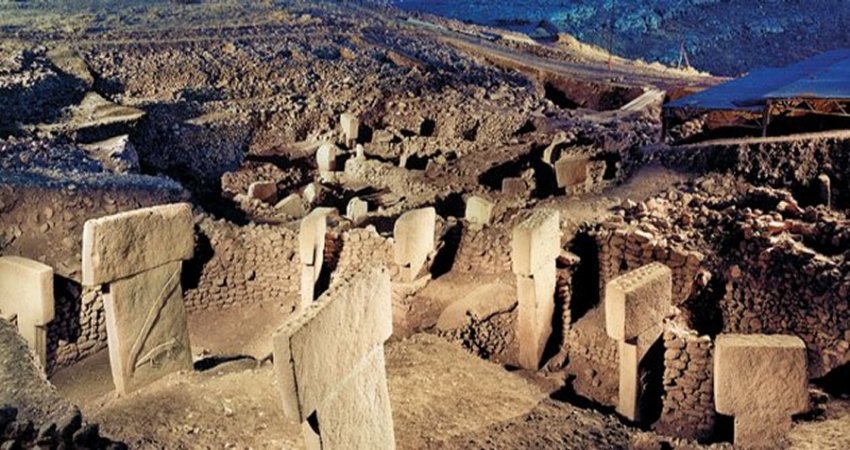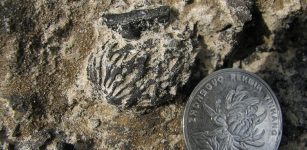‘Fool’s Gold’ Mirrors Found in Arizona Reveal Ties to Ancient Mexico
MessageToEagle.com – More than 50 unusual mirrors encrusted with the brilliant mineral pyrite, crafted in distinctly Mesoamerican styles, have recently captured the attention of archaeologists exploring the ties between ancient cultures in the Southwestern U.S. and central Mexico.
Does the discovery mean that ancient Arizonans had direct contact with Mesoamerican city-states?
The mirrors were originally unearthed in the 1930s and 1960s, during excavations of a major settlement of the Hohokam culture now known as Snaketown, Arizona.
Most of the mirrors were found broken, burned, and buried with cremated human remains, with 36 mirrors having been discovered in 16 separate graves.
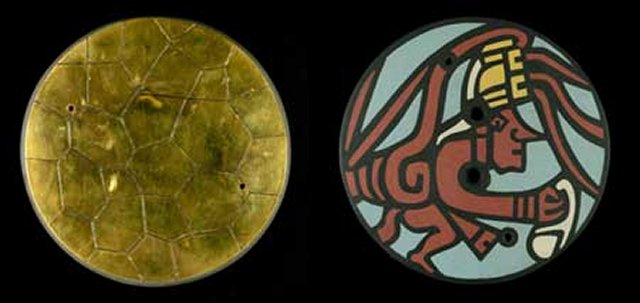
They were just one of the many signs of cultural interaction from Mesoamerica discovered at Snaketown — along with ceremonial ball courts, copper bells, and the remains of colorful macaws, according to Western Digs.
But until an effort was undertaken in 2001 to analyze the grave goods and repatriate them to the modern Gila River Indian Community, the pyrite mirrors went unstudied.
“I thought that the pyrite mirrors were a very interesting topic and that I’d find a lot of information on them,” said Dr. Emiliano Gallaga of Mexico’s National Institute of Anthropology and History, who took part in the repatriation project.
“But with time, I found that everybody mentioned them, but there was no research about them.”
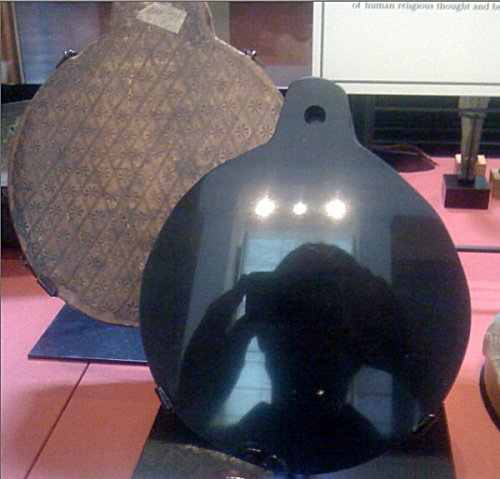
So Gallaga documented the mirrors’ sizes, shapes, materials, and methods of manufacture, with a view to determining where they were made, how, and by whom.
His analysis revealed that the mirrors were likely created in central Mexico from local materials, in a painstaking, time-consuming process that made them costly status symbols.
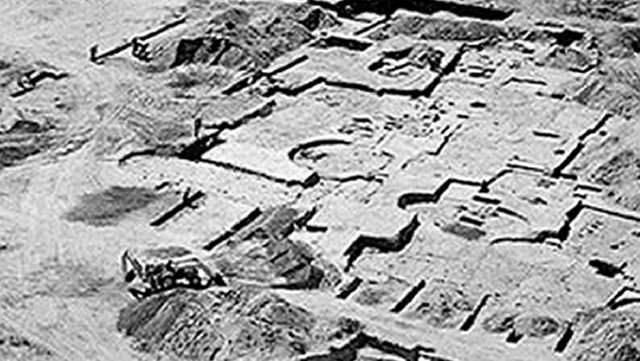
“Today, a mirror is a normal item of our daily life, but in the past, an item that could reflect an image was really expensive.
“According to our research, a single, small mirror could need 900 to 1300 hours, or 110 to 160 days, for a single craftsperson to do. So they are expensive to make.”
Early accounts and depictions of mirrors used among the Olmec, Maya, and Aztecs showed that they were often worn by elite members of society as ornaments, sometimes on the chest, other times on a belt at the base of the back, or on headgear.
“Mirrors were not only an item to see yourself; they were also portals to another dimension, to the ancestors, and a prestige item too,” Gallaga said.
Radiocarbon dates associated with the burials dated the mirrors from between 650 to 950 CE, a broad range from the Classic Period of Mesoamerica, when the Maya network of city states and the metropolis of Teotihuacan were at their peaks.
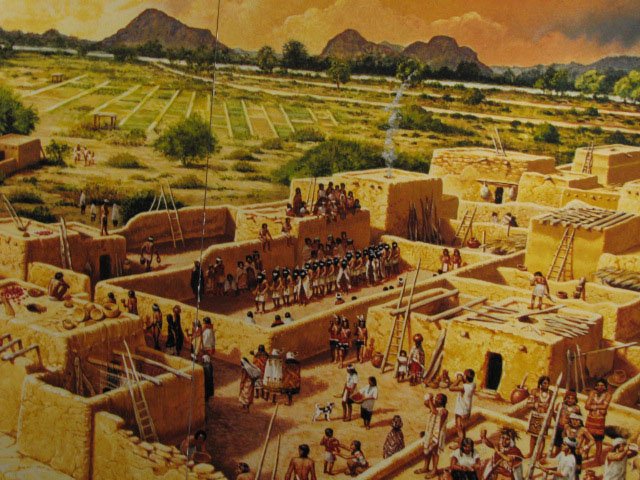
What’s more, the techniques used to make them — with delicate flakes of pyrite glued to sandstone or other rock with adhesive likely made from tree resin — bear the distinctive signs of Mesoamerican craftsmanship.
This, combined with the fact that there were no known deposits of pyrite, also known as fool’s gold, that were used by the Hohokam, suggest that the mirrors were made much farther south from where they were buried.
“The manufacturing techniques, the context, and archaeological evidence points to a Mesoamerican handicraft,” Gallaga said.
“New evidence could show local [mirror] workshops, but so far there is none.
“We know about some workshops in the Southwest area for turquoise items, but the tools used in that area are completely different than those used for pyrite mirror manufacture.” Uncovering the purpose and the origin of the mirrors has important implications for the significance of Snaketown itself, he added.
See also:
Secrets Of Mysterious Lost Kingdom Of Calusa In Florida And The Shell Indians
Bighorn Medicine Wheel: Sacred Site And Ancient Solar Observatory
Is The Poverty Point Octagon World’s Largest Ancient Solstice Marker?
With three dozen mirrors having been buried with 16 cremated remains — the largest assemblage of pyrite mirrors ever found outside of Mesoamerica — Snaketown may have been home to many elites, such as political rulers, religious leaders, or warriors.
While cultures like the Aztecs were known to engage in trade with distant communities through long-distance traders called pochtecas, the Snaketown mirrors are more likely evidence of indirect contact with Mesoamerica, with goods like the mirrors having passed through many different groups as they moved north and south.
“The presence of pyrite mirrors shows a Mesoamerican interaction, but careful! We are not suggesting a long, pochteca-like trade system,” he said.
“We think that the sedentary communities such as the Hohokam are getting prestige items such as the pyrite mirrors from a long distance, but we think not directly.
“We think that the nomadic, hunter-gatherer groups of northwest Mexico and the American Southwest are the ones who are transporting this material from the south to the north, and shell, turquoise, and other items from the north to the south, probably as far as the borders of Mesoamerica, where pochtecas would carry on the trade inland.”
Gallaga reports his findings in the journal Kiva.
MessageToEagle.com

